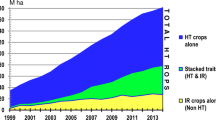Summary
The permanent grassland in the northern alpine and prealpine regions of Germany, Austria and Switzerland is characterized by a large genetic diversity of commercially important grass and clover species. This gene pool is endangered by the increasing practice of grassland renovation. The collection of genetic resources from that marginal habitat serves two purposes, therefore: Utilization of the gene pool in breeding programmes, and conserving the natural variation of endangered habitats. A considerable number of ecotypes of various species has been collected by several workers over a period of thirty years.
Special attention is given to the materials collected and evaluated by Scheller (several species), Tyler (several species), Spatz (perennial ryegrass), Krings & Simon (Italian ryegrass) and Simon (several species). The materials described contain genotypes which appear useful for the improvement of such agronomically important characters as date of heading, plant height, winter hardiness, persistency and rust resistance under marginal conditions. From Simon's collections six cultivars registered or applied for registration in the German List of Cultivars emerged.
Similar content being viewed by others
References
Berner, P., 1993. Personal communication.
Bundessortenamt, 1991. Beschreibende Sortenliste 1991. Gräser, Klee, Luzerne.
Chorlton, K., 1991. Genetic resources — conservation in the United Kingdom. IGER Report 1991: 33–34.
IBPGR, 1989. Report of a Working Group on Forage (Third Meeting). European Cooperative Programme for the Conservation and Exchange of Crop Genetic Resources. International Board for Plant Genetic Resources.
Krings, W. & U. Simon, 1993. Unpublished.
Oberdorfer, E., 1990. Pflanzensoziologische Exkursionsflora. Sixth ed. Eugen Ulmer, Stuttgart.
Reichsamt für Wetterdienst, 1939. Klimakunde des Deutschen Reiches. Berlin.
Scheller, H., 1987. Selektion in Ökotypensammlungen. DLG-Ausschuß für Gräser, Klee und Zwischenfrüchte. Berich der 28. Fachtagung 1986: 54–62.
Scheller, H., 1993. Personal communication.
Simon, U., 1983. Utilization of genetic resources in breeding programmes. Eucarpia Fodder Crops Section. Report of Meeting 1982: 247–264.
Spatz, G., W. Schröpel & J. Bauer, 1987. Die autochthone Weidelgraspopulation ‘Kempten’, ihre Leistungsfähigkeit und Ausdauer im Vergleich zu Zuchtsorten. Das wirtschaftseigene Futter 33: 248–261.
Tyler, B.F., 1987. Description and distribution of natural variation in forage grasses. Eucarpia Fodder Crops Section. Report of Meeting 1987: 13–22.
Author information
Authors and Affiliations
Rights and permissions
About this article
Cite this article
Simon, U. Collecting and evaluating genetic resources of fodder plants from subalpine and alpine permanent grassland. Euphytica 77, 175–181 (1994). https://doi.org/10.1007/BF02262629
Issue Date:
DOI: https://doi.org/10.1007/BF02262629




